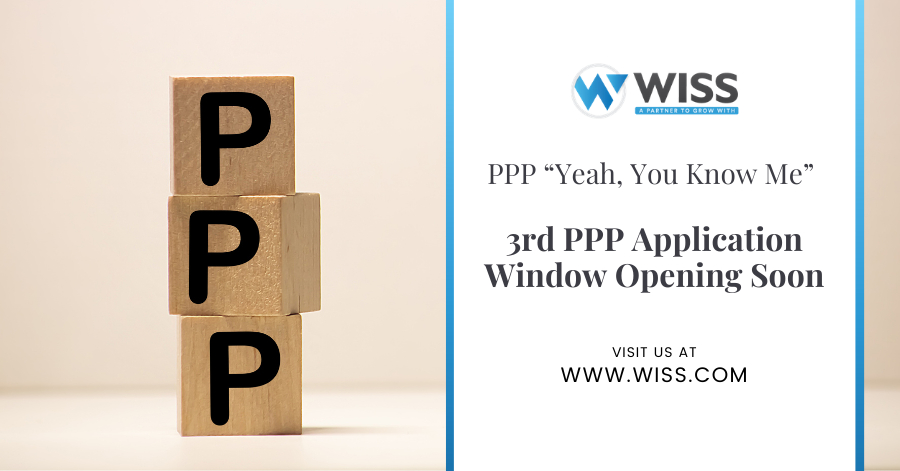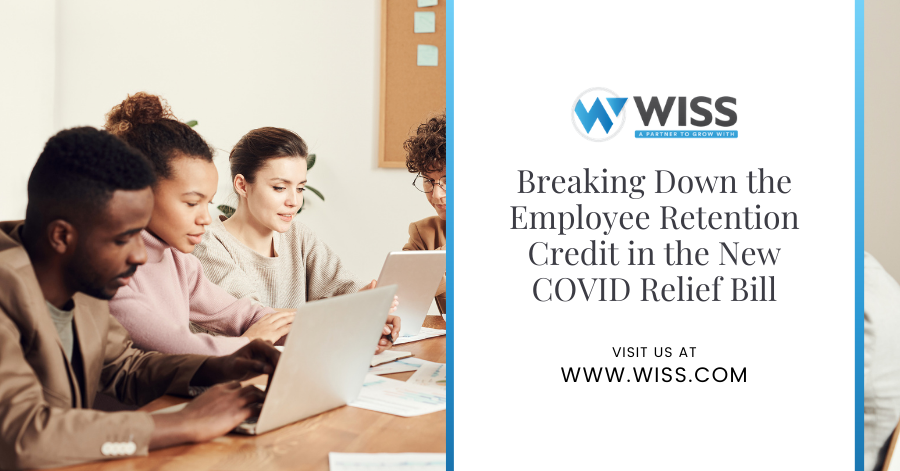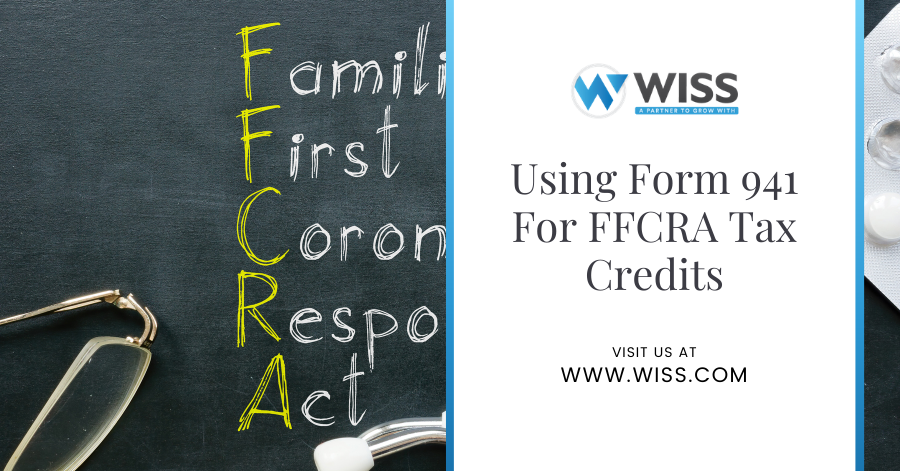Late Wednesday evening, the U.S Small Business Administration (SBA) in coordination with the Department of Treasury, issued guidance for the revamped Paycheck Protection Program (PPP) authorized by the Economic Aid Act of 2020.
The newly released guidance includes:
- Interim Final Rule (IFR) “Business Loan Program Temporary Changes; Paycheck Protection Program as Amended” an 82-page consolidation of existing PPP guidance in the form of 24 interim final rules, FAQ’s, and amendments to the program from the Economic Aid Act.
- Interim Final Rule (IFR) “Business Loan Program Temporary Changes; Paycheck Protection Program Second Draw Loans” a 42-page document implementing section 311 of the Economic Aid Act, which authorizes the U.S. Small Business Administration to re-open the PPP program for a new round of lending. Congress has allocated $285 billion to this 3rd round of PPP funding. The application window could open as early as Monday January 11th and eligible borrowers will have until March 31st to submit their application
- “Guidance on Accessing Capital for Minority, Underserved, Veteran and Women-Owned Business Concerns” a 3-page document clarifying SBA intends to restrict the first two days of the PPP application window exclusively to borrowers from lenders that serve minority and women-owned businesses. Some may remember these companies had a very difficult time obtaining funding during the first 2 rounds of the program, and SBA is focused on ensuring these businesses receive a loan during this 3rd round of funding
Background
On March 27, 2020, President Trump signed into law the Coronavirus Aid, Relief, and Economic Security (CARES) Act, a $2.3 trillion relief package designed to stem the economic damage wrought by the Covid Pandemic and assist individuals and businesses through this difficult time. The program provides forgivable loans to qualifying businesses that they can use to cover payroll, mortgage interest, rent, and utilities. The first round of the program saw $350 billion appropriated by Congress which ran out in about 2 weeks. Congress authorized an additional $310 billion for the program in April which lasted until August 8th when SBA stopped accepting PPP loan applications. To date, the SBA has approved $525 billion in loans to 5.2 million eligible borrowers. $134 billion of the 2nd appropriation was never disbursed to qualifying borrowers.
Eligibility
The revamped and 3rd iteration of the PPP program provides qualified borrowers with two options to obtain financing: First-time qualified borrowers that did not receive a loan before the application window closed August 8th, 2020, and 2nd Draw borrowers that previously received a loan and meet the eligibility requirements for a 2nd draw loan.
First-Draw PPP Loans
Eligible borrowers that have not previously received a loan under the PPP program can apply for a 1st draw loan when SBA opens the application window. Inconsistent or incomplete guidance, constantly changing rules, and concern by businesses that they would not be able to achieve loan forgiveness were significant deterrents to otherwise eligible borrowers from applying for a loan during the first 2 rounds of the program. Borrowers that chose not to apply for a loan, or that applied for a loan and decided to return the funds, are now eligible to apply for a loan this round, and as a first-time borrower, these eligible businesses will largely follow the program’s original rules.
A business must have been in operation on February 15th, 2020 and meet the following criteria:
- Have 500 or fewer employees
- Independent contractor, Self-Employed Individual, or Sole Proprietor
- Certain not-for-profits
- Accommodation and food services operations (NAICS code 72) with fewer than 500 employees per physical location
The Economic Aid Act increases eligibility to 501(c)(6) business leagues, which includes chambers of commerce, visitors’ bureaus, and destination marketing organizations that have 300 or fewer employees and do not receive more than 15% of receipts from lobbying.
Loan Amount
First-Draw PPP borrowers may receive a loan amount of 2.5x average monthly payroll costs, up to $10 million. Second-draw borrowers are eligible for a loan amount of 2.5x average monthly payroll costs, up to $2 million. Borrowers will have the option of using 2019 or 2020 payroll to determine average monthly payroll costs. Hard hit businesses such as hotels and restaurants with NAICS code 72 can receive up to 3.5x their average monthly payroll costs.
Loan Terms
2nd draw loans are generally subject to the same terms, conditions, and requirements as 1st draw loans. This includes:
- No collateral will be required from the borrower
- No personal guarantee from the businesses’ principals
- The interest rate is set at 1.00% for all PPP loans
- Maturity date set at 5 years
- Borrowers will be required to complete certifications attesting the borrower understand PPP program eligibility and that the information provided to the lender is fair and accurate
- 2nd draw loans are subject to the 300-employee size standard and the 25% revenue reduction requirement
- 2nd draw borrower must have used, or will use the amount of a 1st draw PPP loan in order to be eligible for a 2nd draw loan
Second-Draw PPP Loans
The Economic Aid Act authorizes a 2nd draw loan for those businesses that had previously received a loan that meet certain criteria:
- Have 300 or fewer employees
- Used or will use the full amount of any existing PPP loan
- Experienced a decline in gross receipts of at least 25% during 2020 compared to the same quarter of 2019
The IFR generally defines gross receipts to include all revenue received or accrued (consistent with the entity’s accounting method) from whatever source, including from the sales of products or services, interest, dividends, rents, royalties, fees, or commissions, reduced by returns and allowances. Any forgiveness amount of a First-Draw PPP loan that a borrower received in calendar year 2020 is excluded from a borrower’s gross receipts.
Additionally, housing cooperatives with 300 or fewer employees are now eligible to receive a loan under the program. These borrowers were originally shut out of the program by the CARES Act which deemed passive businesses owned by developers and landlords, as well as apartment buildings as ineligible.
Eligible Use of PPP Funds
Borrowers will be able to use PPP funds for the same payroll and nonpayroll costs permitted during the first phase of the program, while the Economic Aid Act authorizes additional expenses:
- Supplier Costs: Expenditures made by a borrower to a supplier of goods that are essential to the operation of the entity at the time the expenditures were made
- Operations Expenditures: Payments for any business software or cloud computing service that facilitates business operations; human resources, sales, and billing functions; accounting or tracking of supplies, inventory, records, and expenses
- Property Damage Costs: Related to property damage and vandalism or looting due to public disturbances that occurred during 2020 that were not covered by insurance or other compensation
- Worker Protective Equipment: Operating or capital expenditures to facilitate the adaptation of the business activities of an entity to comply with requirements established or guidance issued by the Department of Health and Human Services, CDC, OSHA, or any state or local government
Like the first round of loans, borrowers must spend at least 60% of the loan proceeds on payroll during the covered period between 8 or 24 weeks to be eligible for full loan forgiveness. Borrowers that do not meet the 60% spend requirement will experience a reduction in loan forgiveness.
Minority and Women-Owned Businesses
Due to the challenges many minority and women-owned businesses experienced applying for and receiving funding during the first round of the program, the Economic Aid Act earmarks funding specifically for these entities. The ear-marked funding is provisioned as follows:
- $15 billion for first and second draw PPP loans for lending by community financial institutions
- $15 billion for first and second draw PPP loans for lending by insured depository institutions, credit unions, and Farm Credit System institutions with consolidated assets of less than $10 billion
- $35 billion for new first-draw borrowers
- $15 billion and $25 billion for first draw and second-draw PPP loans, respectively, for borrowers with a maximum of 10 employees or for loans of less than $250,000 to borrowers in low- or moderate-income neighborhoods.
The SBA intends to take a few steps to ensure increased access to PPP loans for these impacted businesses by implementing the following:
- Accept PPP loan applications only from community financial institutions for at least the first two days when the PPP loan portal re-opens
- Direct Lender Match borrower inquiries to small lenders who can aid traditionally underserved communities
- Continue setting aside dedicated hours to process and assist the smallest PPP lenders with their PPP loans
- Continue to strongly encourage CDFIs and minority-, women-, veteran-, and military-owned lenders to apply to become PPP lenders. SBA will give full and prompt consideration to these applications to become PPP lenders consistent with program guidelines, including in cases where the lender does not meet all the requirements listed on the updated SBA Form 3507
Documentation Required
Eligible borrowers will be required to provide supporting documentation with their application to establish eligibility under the program, for either a 1st or 2nd draw loan. This includes:
- Payroll records supporting the average monthly payroll of the applicant
- Many payroll processors created template reports specifically for eligible borrowers to determine their average monthly payroll costs
- Payroll tax filings including IRS Form 941 and State Quarterly Returns
- Form 1099-MISC, Miscellaneous Income for self-employed or sole proprietorships
- Form 1040, Schedule C Profit or Loss from Business
- Income and Expenses from a Sole Proprietorship
- Bank Records
- Tax forms, quarterly financial statements, and bank statements may be used to substantiate the 25% revenue reduction requirement
Show Me the Money
Wiss is pleased to announce that we will be actively participating and facilitating PPP 2 loans when SBA opens the application window. In conjunction with the AICPA and Biz2Credit, the firm has the ability to submit eligible borrower applications directly through this proprietary fintech portal. This is a nice alternative for eligible businesses, as many remember the difficulties and outright insanity experienced during the 1st phase of funding. Please contact Tricia Meola [email protected] to help assess eligibility for a 2nd PPP loan, and to start the process or organizing documentation to be ready to submit the application once the portal opens.

 Previous
Previous


